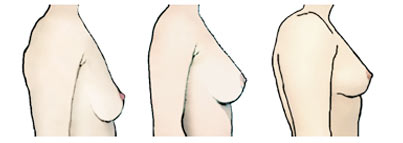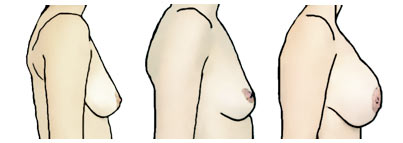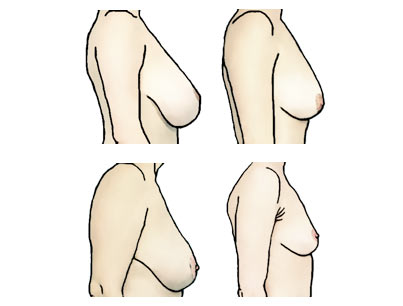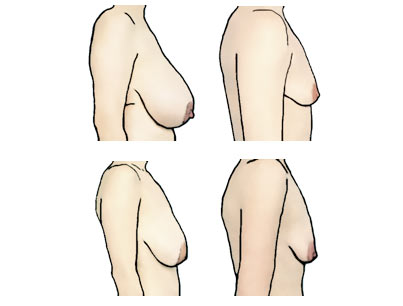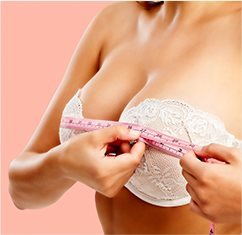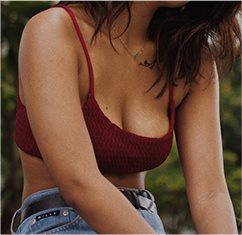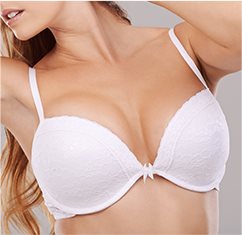KNOW YOUR BREASTS
A guide to classifying your breast position
Breasts are held in place on your chest by ligaments called “Cooper Ligaments.” There are no muscles that can be exercised to move your breasts back up once they begin to fall. It is the stretching over time of these ligaments that causes the southerly movement of your breasts. And, the only way to stall this movement is to have your breasts fully supported, and their movement diminished throughout the day. You should also wear sports bras with the appropriate impact level while exercising.
All four breast positions identified below are very common. And, you can experience all four of these breast positions throughout your life.
- TOMIMA

